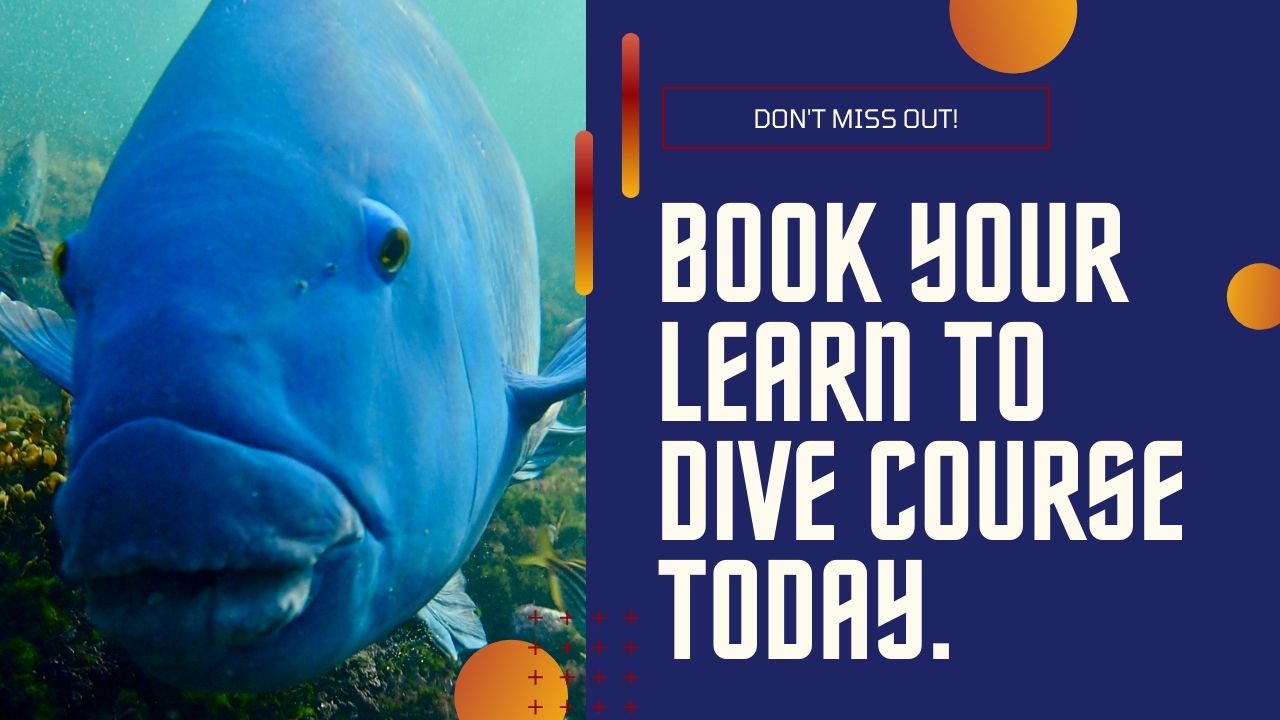You have 0 product(s) in your cart.
Abyss Scuba Diving
Understanding The Moray Eel: Myths And Facts Unveiled
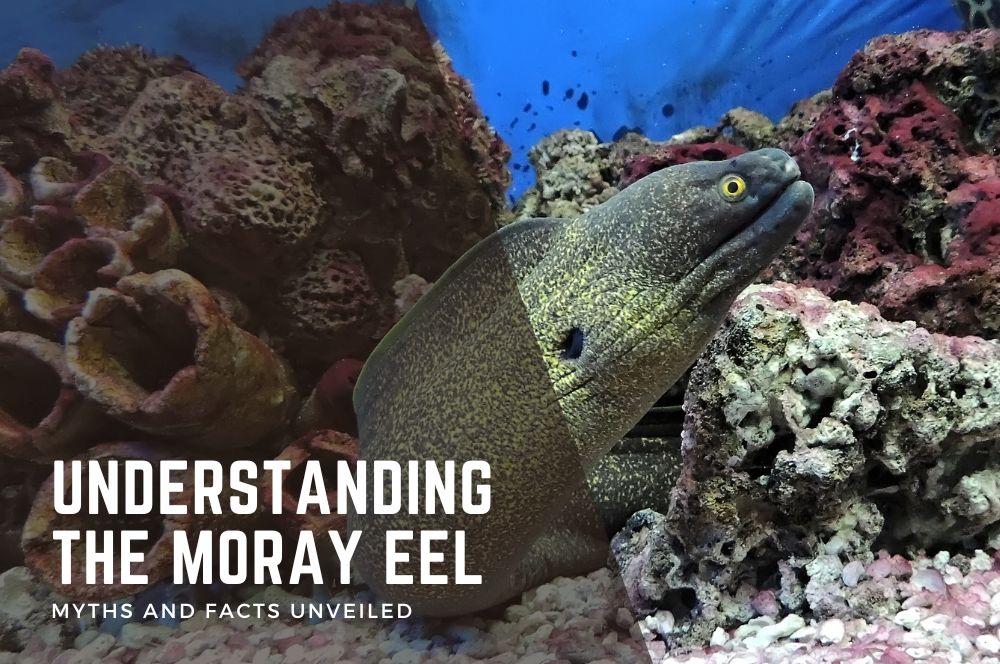
Understanding the Moray Eel: Myths and Facts Unveiled
Dive into the depths of the ocean, and you might encounter the elusive moray eel. Notorious for their fierce appearance and extensive habitats, these creatures captivate divers and marine enthusiasts alike. Read on to discover the secrets of their predatory prowess, their vital role in the reef ecosystem, and how their remarkable features have evolved to adapt to life under the sea.
Key Takeaways
-
Moray eels are crucial apex predators in reef ecosystems, living in warm, coral reef habitats and possessing a diverse range of species, with some reaching up to 8 feet in length.
-
Their anatomy boasts unique adaptations like pharyngeal jaws for effective predation and skin covered in toxic mucus for defense; they also exhibit nocturnal, opportunistic hunting behaviors and sometimes engage in cooperative hunting with groupers.
-
Despite not being currently listed as threatened, Moray eels face risks from human activities and are subject to conservation efforts, such as marine sanctuaries and responsible fishing practices to protect their habitats and populations.
The Enigmatic Life of Moray Eels
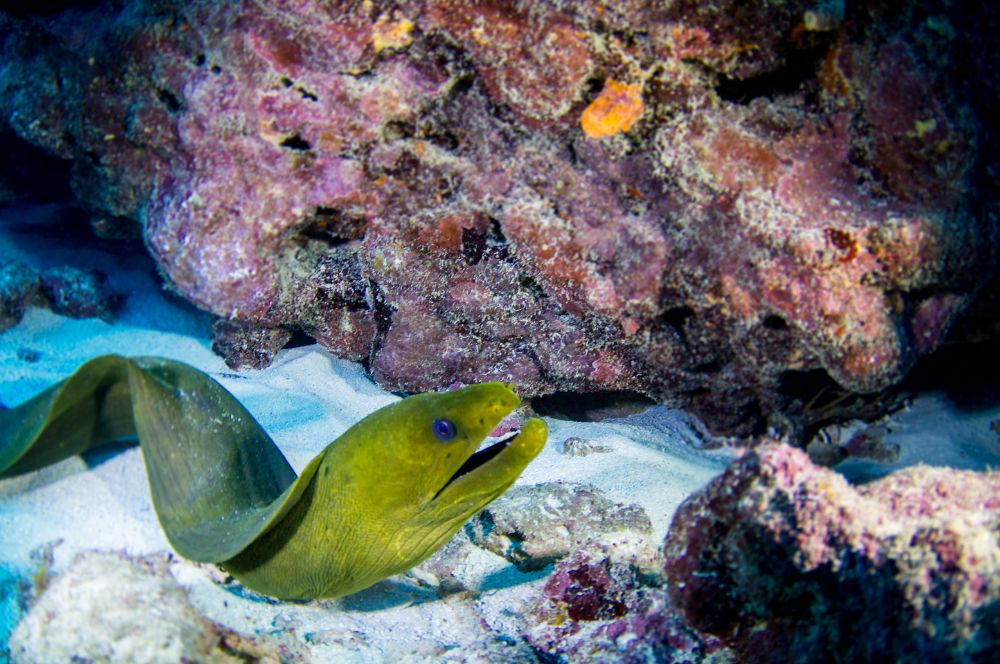
Imagine a creature with a long, slender body, not unlike a snake, but with a large set of jaws housing razor-sharp teeth. That’s a Moray eel for you, a captivating creature that can grow up to a staggering 1.5 meters, with some even reaching three meters in length. These eels are a sight to behold, with their fascinating shapes and sizes, but they’re not just visually interesting. They’re also crucial players in the coral reef ecosystem, particularly in areas facing human pressure, where their numbers flourish due to a reduction in predators and competitors.
But where exactly do you find these intriguing creatures? Let’s dive a little deeper into their habitat and distribution, shall we?
Habitat and Distribution
Moray eels have a knack for finding the best spots in the sea. They are found in diverse aquatic environments, but their heart truly lies in the warm, saltwater habitats of coral reefs, where moray eels live. These reefs are not just their homes but also their hunting grounds. The intricate structures of the reef provide the perfect hideouts, supporting their ambush-based hunting tactics.
Now that we know where these creatures love to hang out, let’s explore the many faces of Moray eels in the next subsection.
Species Diversity
The world of Moray eels is a diverse one, with approximately 200 species of moray scattered across the globe. These species come in a wide range of sizes and appearances, adding to the allure of these creatures. The largest among them, the aptly named giant Moray, can reach up to 8 feet in length and weigh as much as 30 kilograms, making it a formidable presence in the ocean.
With this impressive diversity, Moray eels certainly add a dash of color and intrigue to the coral reefs. But what role do they play in the bigger picture of the ecosystem? Let’s find out.
Importance to the Reef Ecosystem
As apex predators in reef ecosystems, Moray eels are the top dogs, or rather, the top eels. Larger species, in particular, regularly occupy the top tier of the food chain. These eels take an opportunistic approach to their diet, feeding mainly on:
-
fish
-
crabs
-
shrimp
-
octopuses
-
squid
By preying on weakened or dead organisms, they contribute to the ecological balance of the reef.
Their feeding strategy is as unique as they are. Camouflaging within reefs and ambushing prey, they use specialized teeth and jaws for tearing or crushing their food. Their presence also affects the distribution of other species within the reef, like sharks, indicating competitive or predatory tensions.
Now that we’ve explored their habitat, species diversity, and ecological role, let’s dive into their anatomy and adaptations.
Anatomy and Adaptations of Moray Eels
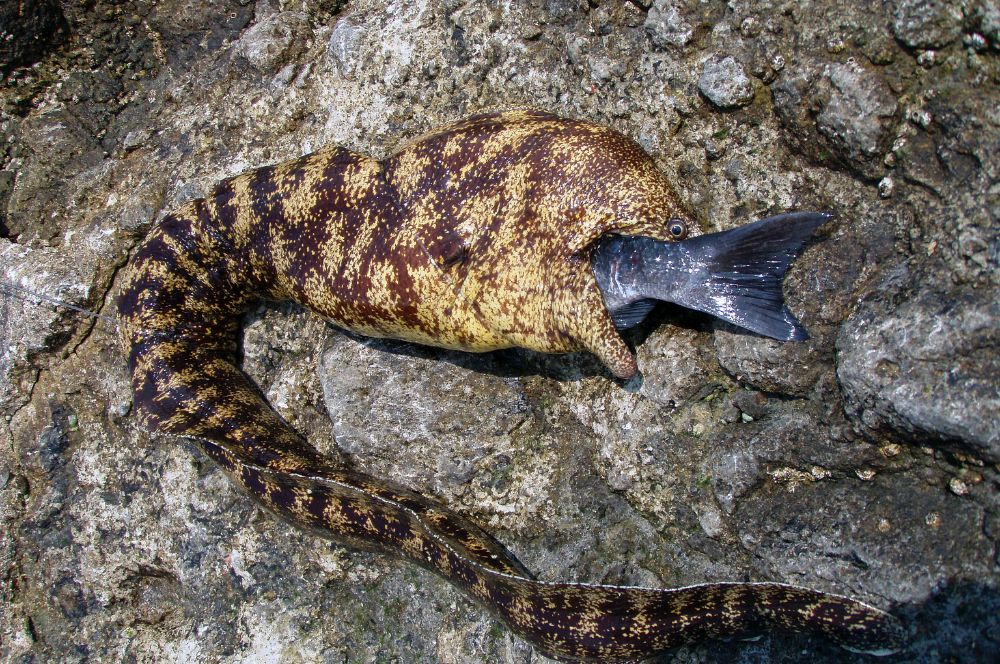
Moray eels are a masterpiece of evolution, equipped with some truly unique anatomical features that aid their survival in the deep sea. One of their most defining features is their powerful jaws, which house not one, but two sets of teeth, each designed to capture and process prey efficiently. But there’s more to them than meets the eye. For instance, the green Moray eel, commonly thought to be green, is actually brown with a yellowish hue, thanks to a layer of toxic mucus over their skin.
Let’s dive deeper into these fascinating anatomical adaptations, beginning with their unique pharyngeal jaws.
Pharyngeal Jaws and Feeding
One of the most extraordinary features of Moray eels is their pharyngeal jaws – a second set of jaws located in their throat. These jaws are capable of shooting forward to capture prey and then retract to aid in swallowing. Equipped with sharp, curved teeth, these jaws improve the eels’ ability to grasp and hold onto their prey.
Unlike other fish species, the pharyngeal jaws in Moray eels feature specialized muscle arrangements that enable them to move larger prey down their esophagus. This adaptation allows Moray eels to thrive on diverse diets, with variations in jaw and teeth shapes for different prey types, including blunt, molar-like teeth for crushing hard-shelled prey.
Sensory Capabilities
While their unique jaws and teeth are impressive, Moray eels also have a keen sense of smell, which they rely on for hunting. Using their nostrils, they can detect even weakened or dead prey, which they often prefer due to the ease with which these targets can be detected and captured.
Although they have poor vision, their sense of smell is their main tool for locating prey during their nocturnal hunts. Moray eels also have visual pigments that are adapted to the light conditions of their habitats, with some species showing adaptations for deeper water environments.
Skin and Mucus Production
Moray eels have the following characteristics:
-
They are scaleless
-
Their thick skin is covered by a mucus coating which serves as a protective barrier
-
This mucus is produced at a higher rate than other eel species, due to a high density of goblet cells
-
The composition of the mucus varies among different species
This protective mucus contains toxins, such as hemagglutinin, which can help Moray eels defend themselves against predators and parasites. This mucus is just another testament to their incredible adaptation capabilities. Speaking of adaptations, let’s move on to their behavioral patterns.
The Behavioral Patterns of Moray Eels
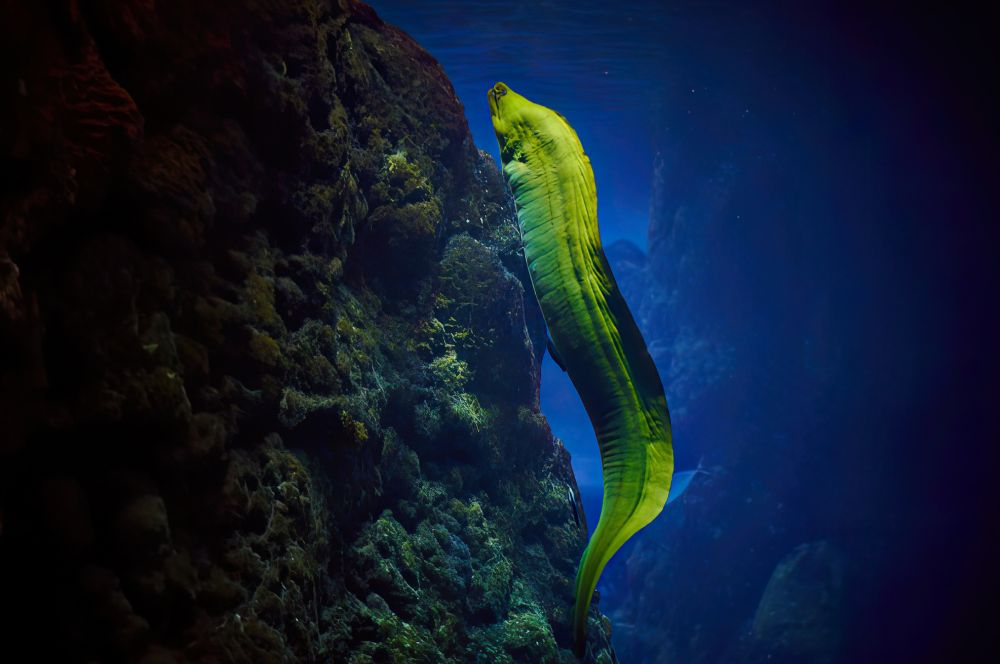
Moray eels, like most wild animals, are solitary creatures. They maintain a highly territorial approach to their environment, though they exhibit tranquility and inquisitiveness when not feeling endangered. As nocturnal hunters, Moray eels commonly feed on a diet that includes smaller fish, crabs, and octopuses, taking an opportunistic approach to their predation.
The preference for weakened or dead prey among Moray eels is likely due to the ease with which these targets can be detected and captured. And if you’re wondering when the best time to observe these creatures is, it’s during the night when they’re actively swimming and hunting.
Nocturnal Predation
When the sun sets, moray eels hunt with heightened activity, coming alive and swimming through the ocean. They employ a strategy of evasive and nocturnal hunting, where they:
-
ambush prey within reef crevices
-
use their strong jaws and sharp teeth to capture and swallow their prey
-
possess an additional set of internal jaws, known as pharyngeal jaws, which assist in drawing prey deeper into their digestive tract
This contrasts with the open-water, day-active hunting techniques of groupers in tropical and subtropical seas.
Their specialized retina structures and photoreceptor arrangements are indicative of their nocturnal activity patterns. In fact, scuba divers often observe Moray eels, such as the echidna nebulosa, being more active during night dives, providing a unique opportunity to witness their natural hunting behaviors.
Interactions with Other Species
Even though they are solitary creatures, Moray eels are known to team up with groupers for cooperative hunting. This behavior has been notably observed in the Red Sea and enhances their hunting efficiency. To initiate cooperative hunting, groupers perform specific visual signals like frequent head shaking to communicate with Moray eels.
Moray eels also have a mutualistic interaction with cleaner shrimp, where they are cleared of parasites while providing food scraps to the shrimp at reef cleaning stations. These interactions are just a glimpse into their captivating behavioral patterns.
But what happens when Moray eels encounter humans?
Moray Eels and Human Encounters
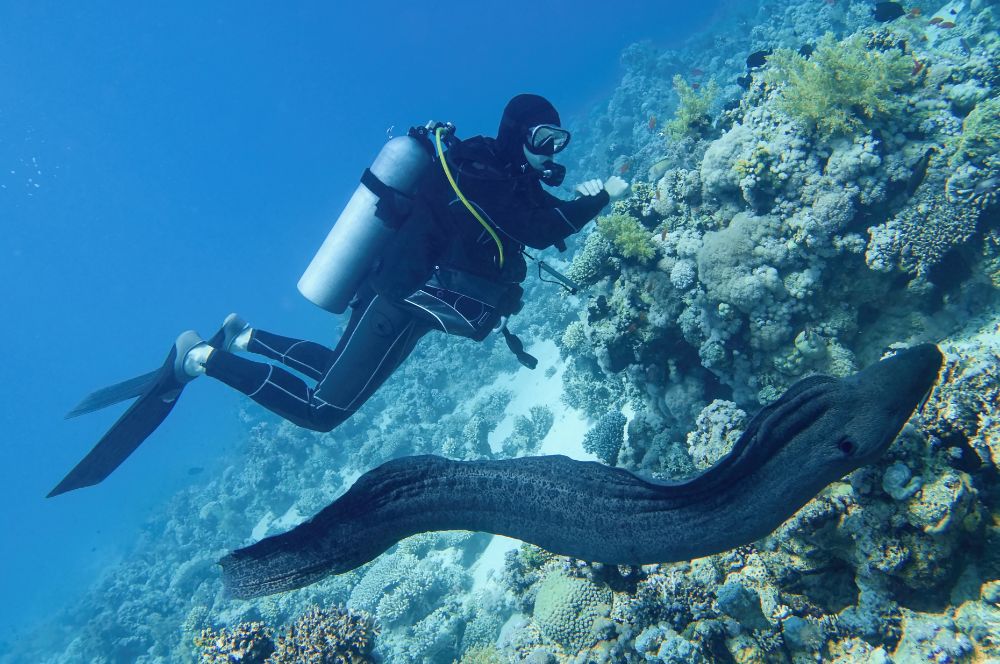
Human encounters with Moray eels can be as enthralling as they are risky. These creatures are typically not aggressive towards humans and attacks are not common; they will not attack without provocation. However, potential hazards during encounters include their sharp teeth, powerful jaws, and toxins in their mucus.
The consequences of a moray bite can range from bleeding and swelling to infection and possible paralysis, with severe cases requiring surgical intervention. So, how can you safely interact with these creatures? Let’s explore in the following subsections.
Moray Eels in Aquaculture
Moray eels, with their striking looks and behaviors, are popular in home aquariums. However, each species has specific requirements for tank size and habitat setup for their well-being. For instance, the zebra Moray eel requires a 200-250 gallon tank, while the rare and expensive dragon Moray eel requires a larger space of 150 gallons or more.
The honeycomb Moray eel, a large species that can grow exceptionally large, necessitates an aquarium of at least 180 gallons to be housed adequately. These specifications are a testament to their needs and the importance of a proper habitat setup in aquaculture.
Risks and Safety Measures
Scuba diving enthusiasts are advised to maintain proper buoyancy to avoid accidental disturbances to Moray eels or the coral reefs they inhabit. To prevent contact with the toxins in Moray eels’ mucus, divers should swim cautiously in areas where Moray eels are present and avoid getting too close to their hiding spots.
Feeding Moray eels is strongly discouraged as it can lead to unintended aggressive behavior, creating a risk for divers and disturbing the eels. If bitten by a Moray eel, the immediate course of action is to wash the wound thoroughly with soap and water, followed by seeking medical treatment.
Conservation Status and Threats
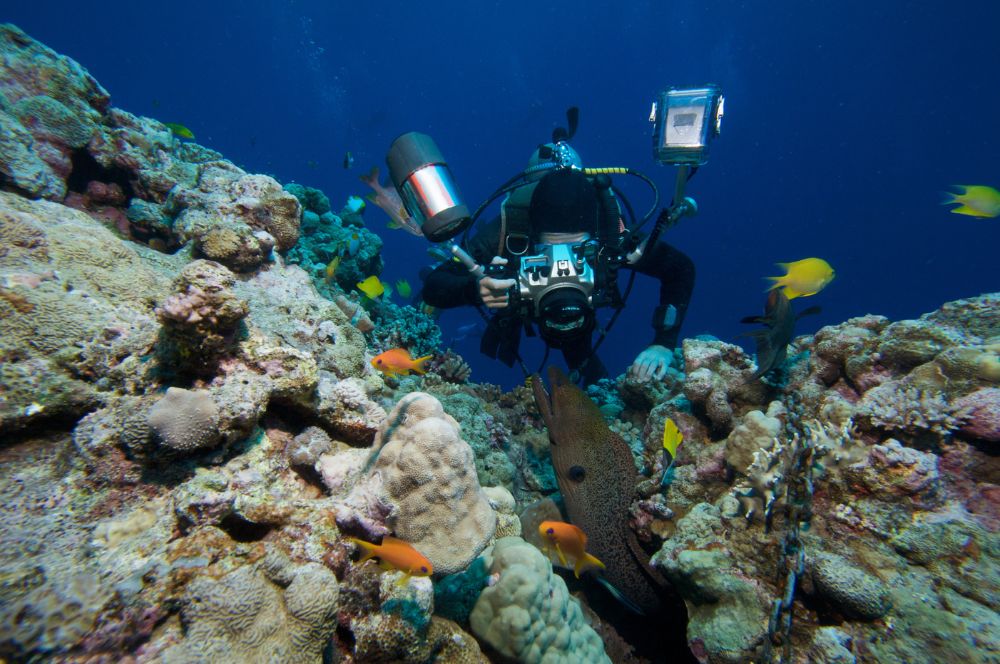
Green Moray eels are not currently considered threatened or endangered, as evidenced by their absence from the IUCN Red List, the US Federal List, and CITES. However, they do face threats from human activities, such as being consumed as food, which can lead to poisoning incidents, and being collected for public aquariums.
So, what efforts are being made to protect these fascinating creatures? Let’s find out.
Protection Efforts
Protection efforts for Moray eels involve a variety of strategies, including the establishment of marine sanctuaries, the implementation of specific fishing strategies, and combating climate change. Marine protected areas such as Rowley Shoals Marine Park in north-western Australia provide critical habitats for Moray eels and offer them protection from human activities.
Efforts to combat climate change indirectly help preserve Moray eel environments. Some initiatives to protect green Moray eels include:
-
Protecting carbon-sequestering habitats
-
Promoting sustainable fisheries
-
Reducing waste
-
Supporting responsible fishing practices
These actions are critical for the survival of green Moray eels.
Role of Divers and Researchers
Scuba divers and marine biologists play a crucial role in studying and conserving Moray eels. By observing their behavior and interactions in their natural habitats, they provide invaluable insights into these creatures’ lives. Rigorous research, including tagging and monitoring Moray eels, helps us understand their movement patterns and growth.
Divers and researchers also collaborate in conservation efforts, promoting awareness and the importance of preserving Moray eel populations. It’s through their efforts that we can hope to protect and conserve these fascinating creatures for future generations.
Summary
Our journey into the world of Moray eels has been a fascinating dive into the deep sea. We’ve explored their enigmatic life, unique anatomical adaptations, intriguing behavioral patterns, and the potential risks and safety measures associated with human encounters. We’ve also delved into their conservation status, threats they face, and the crucial role divers and researchers play in their preservation.
As we resurface from this deep dive, let’s remember that the oceans’ mysteries are still largely unexplored, and creatures like the Moray eels remind us of the wonders that lie beneath the waves. Their survival and well-being are intertwined with the health of our oceans, urging us to take better care of these magnificent waters and the incredible life they harbor.
Frequently Asked Questions
Are Moray eels dangerous to humans?
Moray eels are generally not dangerous to humans unless provoked. However, their sharp teeth, powerful jaws, and toxins in their mucus can pose hazards during encounters. Be cautious around them!
How do Moray eels hunt?
Moray eels primarily hunt at night, using evasive tactics and ambushing prey in reef crevices. This helps them catch their food more effectively.
What is unique about Moray eels' anatomy?
Moray eels have a unique feature called pharyngeal jaws, which are a second set of jaws in their throat that can shoot forward to capture prey and retract for swallowing. This allows them to catch and eat their prey more effectively.
What threats do Moray eels face?
Moray eels face threats from human activities like being used as food, which can lead to poisoning incidents, and being collected for public aquariums. It's important to be aware of these threats to help protect these creatures.
How can we help in the conservation of Moray eels?
To help in the conservation of Moray eels, you can support marine sanctuaries, promote sustainable fisheries, and contribute to efforts combating climate change. Additionally, divers and researchers are essential in studying and conserving Moray eels.
Related Posts
-
Discover the Ocean's Hidden Gem: The…
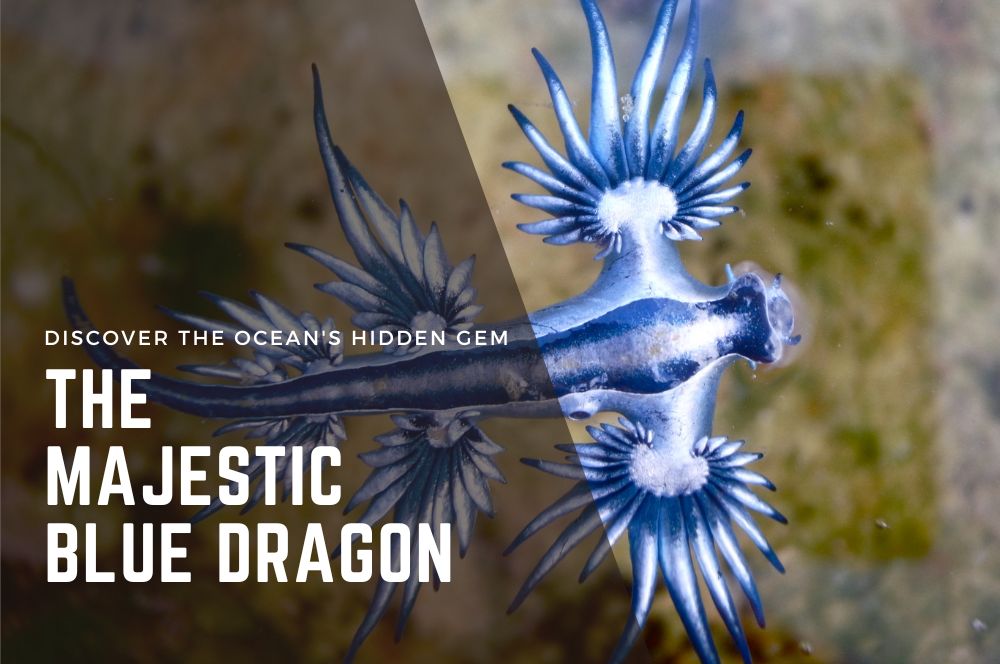
Discover the Ocean's…
Discover the Ocean's Hidden Gem: The Majestic Blue Dragon Encountering the blue dragon, or Glaucus atlanticus, […] -
Discover the Biggest Fish: Giants of…
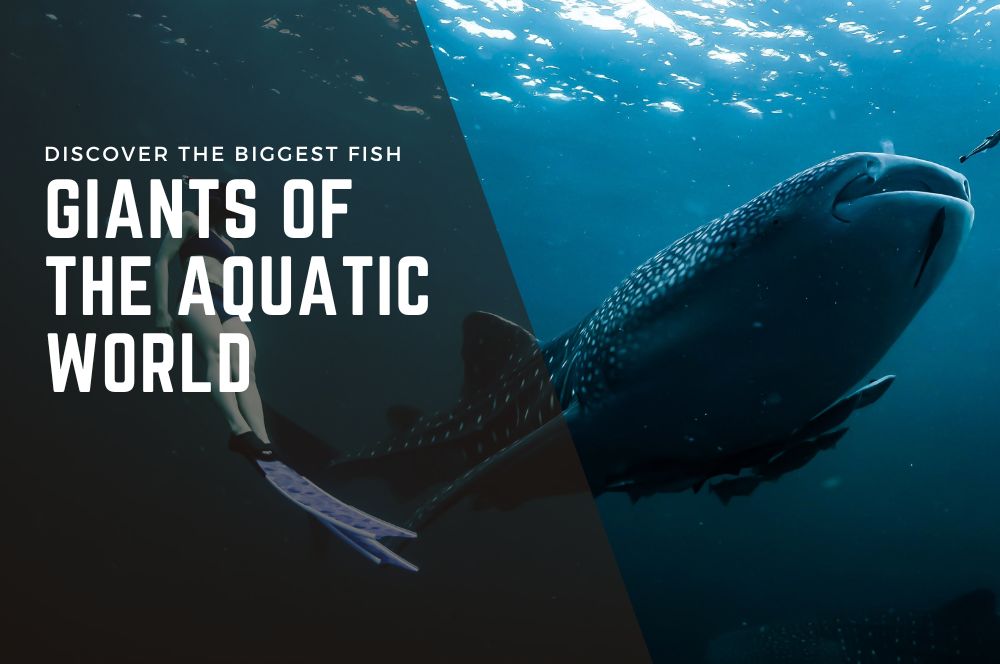
Discover the Biggest…
Discover the Biggest Fish: Giants of the Aquatic World The whale shark reigns supreme as the ocean's gentle […] -
Diving with the Elusive Weedy Sea Dragons
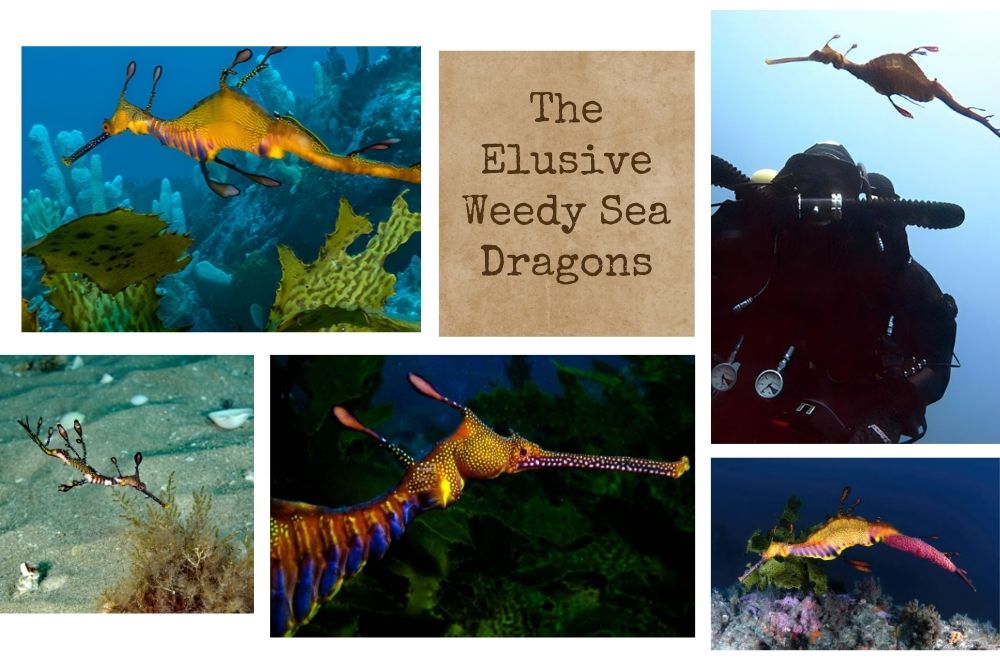
Diving with the Elusive…
Diving with the Elusive Weedy Sea Dragons: An Unforgettable Marine Adventure Have you ever dreamt of encountering […] -
Are Moray Eels Dangerous to Scuba Divers?
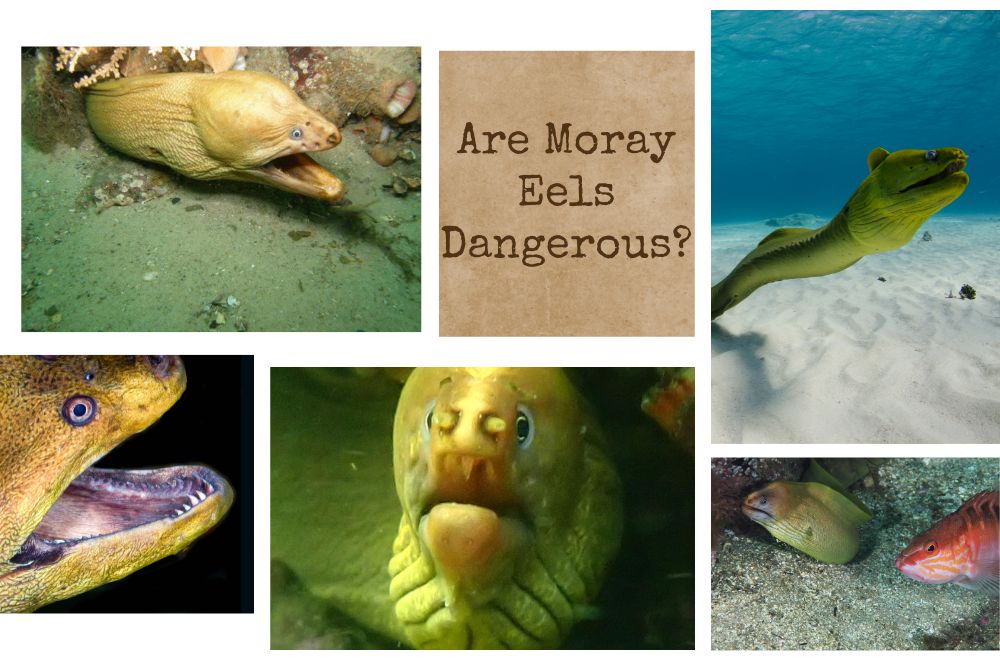
Are Moray Eels Dangerous…
Are Eels Dangerous? - Myths, Truths, and What to Do If Bitten Have you ever wondered, "are eels dangerous?" […]
Recent Posts
